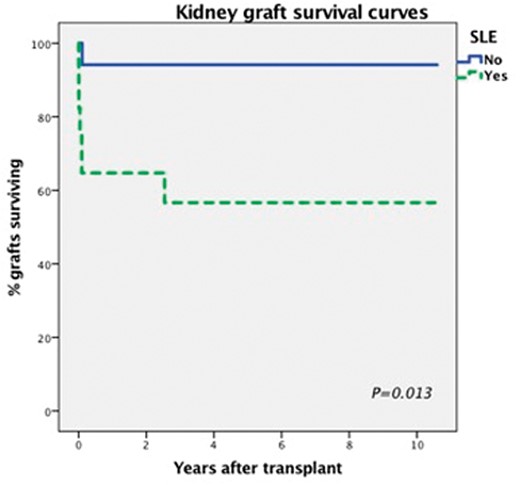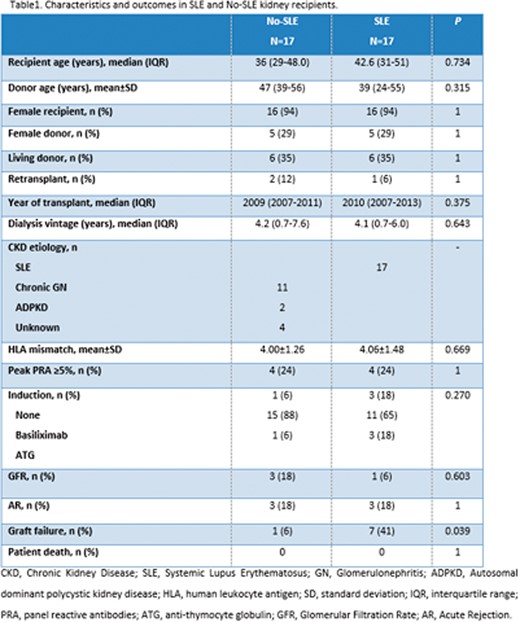-
PDF
- Split View
-
Views
-
Cite
Cite
Ana Castro, Vanda Guardado, Jorge Malheiro, La Salete Martins, Manuela Almeida, Sofia Pedroso, Leonídio Dias, António Castro Henriques, António Cabrita, SP753
OUTCOMES IN RENAL TRANSPLANT RECIPIENTS WITH SYSTEMIC LUPUS ERYTHEMATOSUS: A SINGLE CENTER EXPERIENCE, Nephrology Dialysis Transplantation, Volume 32, Issue suppl_3, May 2017, Pages iii396–iii397, https://doi.org/10.1093/ndt/gfx157.SP753Close - Share Icon Share
INTRODUCTION AND AIMS: End-stage renal disease (ESRD) develops in up to 20% of patients with systemic lupus erythematosus (SLE). The long-term prognosis of renal transplant recipients with SLE is still controversial.Aim: Evaluate kidney transplantation outcomes for patients with SLE at a single center.
METHODS: We retrospectively studied all SLE patients who received a kidney allograft in our center between july 2005 and 2016. For comparative purposes a control group (No-SLE) was selected, matched for recipient age, female recipient, living donor, retransplant, year of transplant and peak PRA ≥5%. Patient and allograft outcomes were compared between cases and controls.
RESULTS: There were 1190 kidney transplants performed between july 2005-2016, including 17 in SLE patients [mean age 42.6 (31-51) years]. Mean follow-up after renal transplantation was 4.3 (1.4-7.6) years.In table 1 characteristics and outcomes in SLE and No-SLE kidney recipients are presented. From the Cox analysis performed, SLE was the single independent predictor of graft failure (HR=8.93; P=0.041). Early graft loss (<1 month after transplantation) was observed in 6 (35,3%) SLE patients, 5 due to intravascular thrombotic events and 1 due to a not functioning kidney. Late graft loss occurred in 1 SLE patient due to chronic rejection. SLE was significantly associated with shortened kidney graft survival, with 43.4 % of SLE grafts failing at 5 years, in contrast with only 5.9 % No-SLE.

SP753 Figure 1

SP753 Figure 2





Comments